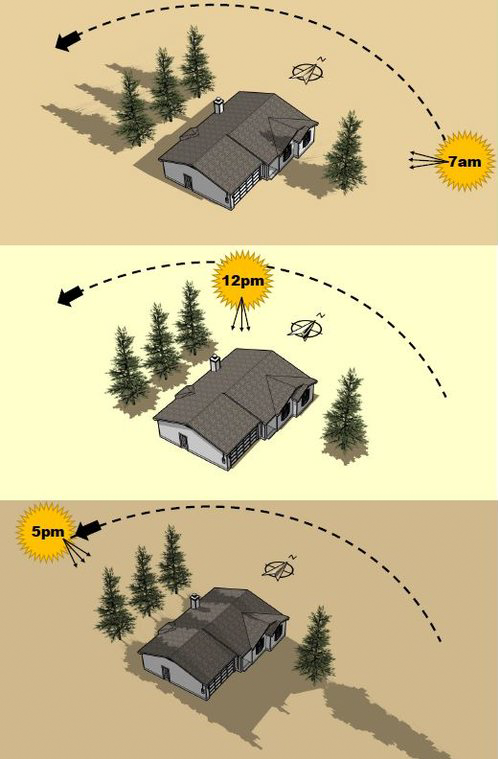Cooling Our Communities:
Heat Preparedness & Tree Planting in the Unincorporated Eden Area

Shade Tree Planting Resources
Tree planting is a nature-based intervention that can help decrease heat in urban environments by providing shade and cooling indoor and outdoor temperatures. The Cooling Our Communities pilot Shade Tree Planting program made free shade trees and tree planting service available in the Eden Area communities of Ashland, Cherryland, Hayward Acres, and San Lorenzo to help these communities stay cool in a warming climate.

Why plant trees?
Trees are a vital part of a healthy community, helping to keep us cool during extreme heat and making us more adaptable to a changing climate.
It's Hot, And Getting Hotter
An "extreme heat day" in Alameda County is a day that reaches 92.6℉ or higher. The number of extreme heat days in Alameda County is expected to rise from 5 per year to 12-15 per year by 2050. This heat increase will be hard on everyone, but can be especially dangerous for children, the elderly, people living with disabilities, and people who live alone - and the Eden Area is home to large percentages of these vulnerable populations.
The Eden Area Is A "Heat Island"
More than 60% of the Eden Area is covered by impervious surfaces like roads, rooftops, and parking lots. These dark, paved surfaces trap heat from the sun and then radiate it back out into the places where we live, work, and play - this is called the "heat island effect". With less than 0.5% tree canopy cover in the Eden Area*, trapped heat results in daytime and nighttime temperatures that are significantly hotter than nearby communities that have more trees
*Source: mrlc.gov, NLCD 2011 USFS Tree Canopy cartographic (CONUS)

Trees Keep It Cool
Planting trees is an investment in the future livability and resilience of our communities as we adapt to a changing climate. Shade trees that are strategically planted around buildings can reduce summertime air temperatures by as much as 9℉, and shaded surfaces may be as much as 45℉ cooler than un-shaded surfaces. Neighborhood trees - even those not directly on your property - contribute to a cooler climate and more livable community for all residents.
Tree Planting Has Co-Benefits
- Trees can decrease energy bills by cooling down living spaces and reducing the need for air conditioning
- Trees filter particle pollutants and improve air quality, reducing rates of cardiac disease, stroke, and asthma
- A landscape that includes trees can help reduce stress and anxiety
- Trees increase the beauty and livability of neighborhoods
- Trees enrich wildlife habitats and increase biodiversity
Co-benefits of Trees
Storm Water Run-Off Prevention
Rain supports the land and nourishes the green landscape. But as the built environment spreads and houses, businesses, schools, and roads replace natural tree cover, the absorbing effect of vegetation and soil is lost. The rain becomes costly storm water runoff. With the benefit of trees and vegetated infrastructure, waterways can remain clean and unpolluted.
Energy Savings
In the hot summer months in California, trees can dramatically reduce energy costs and usage by providing shade. Less energy usage means less fossil fuel resources used to create the energy, which means lower greenhouse gas emissions.
Improved Air Quality
Trees can help absorb sulfur dioxide, ozone, nitrogen oxides, and small particulate matter from the air, leading to improved air quality and livability in communities. Increased canopy cover also helps to reduce heat, in which some air pollutants form. With trees present, there can be up to a 60% reduction in street-level particulates.
Carbon Sequestration and
Greenhouse Gas Reductions
As trees grow, they help to mitigate climate change by sequestering carbon dioxide from the air, storing carbon in the trees and soil, and releasing oxygen into the atmosphere. Trees also serve as shade providers, decreasing our reliance on air conditioning and reducing greenhouse gas usage.
Choose the right tree for your space
Choosing the right tree for your location is the first step toward growing a healthy community forest that will benefit you and your family for years to come. Before you select a tree for your yard, be sure to consider these questions from the Arbor Day Foundation:
- Height Will the tree bump into anything when it is fully grown, such as power lines? [sizing guide]
- Canopy spread. How wide will the tree grow? Will it bump into nearby buildings?
- Seasonality. Is the tree deciduous or evergreen? Will it lose its leaves in the winter? Do you want winter sunshine or a year-round screen?
- Soil, sun, and moisture requirements.
Will your tree have enough sun, or will it be in the shade? Is the soil loose or compacted? - Root zone. Is the tree far enough from nearby concrete (ideally at least 10 feet) and underground utilities?
- Growing region Is the tree suited to your microclimate? See Arbor Day Foundation's Hardiness Zone Map or contact your local nursery for more information.
Tree Care Resources
The following resources were developed as part of the Cooling Our Communities Shade Tree Planting program to help tree recipients understand their trees' needs and care for them into the future:
Free Tree Care Advice
If you have tree or plant health questions, you can contact the free Help Desk provided by the UC Master Gardener Program of Alameda County. This year-round resource can help you by researching tree issues and providing advice on all aspects of home gardening. (Please note that the UC Master Gardener Program is not directly affiliated with our Cooling Our Communities tree planting program and cannot answer program-specific questions.)
UC Master Gardener Program of Alameda County website: https://acmg.ucanr.edu/Contact_Us/
Help Desk contact: acmg@ucanr.edu
Staff Contact
Alison Abbors, Planner III
Alameda County Planning Department
224 West Winton Avenue, Suite 111
Hayward, CA 94544
Phone: (510) 670-5400
Send an email
 Community Development Agency
Community Development Agency GENERAL PLAN, SPECIFIC PLANS, AND ORDINANCES
GENERAL PLAN, SPECIFIC PLANS, AND ORDINANCES